Season three of House Of Cards is up in its entirety on Netflix, and its creator, showrunner and chief writer Beau Willimon was in town to talk about it. But we had something else mind, namely to ask the award-winning playwright about the previous two season’s most shocking moments and the processes behind them. This means that if you haven’t watched the first two seasons of the show – and the first episode of the new one, as it happens – you’ll need to do so before you read on.
In short: SPOILER ALERT.
“It must be weird to write that, right?,” says Willimon. “Something that says, to a decent percentage of the readers, ‘DO NOT READ MY ARTICLE ANY FURTHER’. Anyway, we're grateful!”
“When we decide on a ‘shocking moment’, my mind goes from childish glee to self-doubting fear to a calm, zen-like approach of ‘Ah, well, we’re going there...’ At times there’s even a mechanical craftsmanship. Usually, if we’re not doing something that really has me worried at least once an episode, then I don’t think we’re doing our jobs. And we stumble along the way. I think House Of Cards, like anything, has its mistakes, but I’d rather make mistakes along the way in the pursuit of taking chances and pushing ourselves and our show than to ever be safe with it.
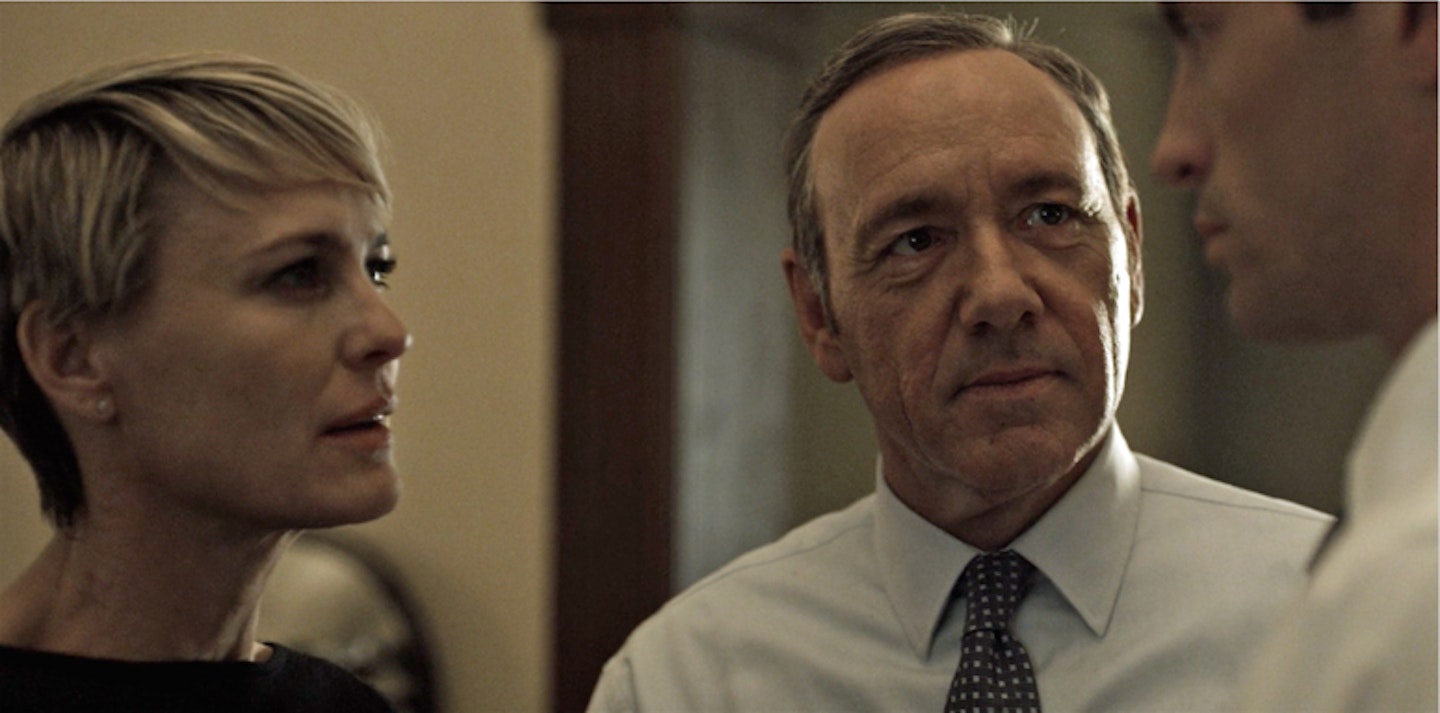
“The ‘Threechum’ - the threesome with the bodyguard Meechum - was one. I wish I could take credit for ‘Threechum’, but I think I was looking online and someone had created that hashtag, and it was just too good. Despite what happened in the library episode, I can’t say that back in season one we were preparing for the threesome moment, but investigating their sexualities and desires was something we were talking about from the very beginning.

“Zoe going in front of the train, that was a big, big moment. In the BBC version, [British equivalent to Zoe] Mattie Storin is pushed off the roof of Parliament in the first series, which was only four episodes, and it was a different show at a different time with a different tone. And of course, there was worry whether it would seem like too big a move, and you’re always hesitant when you have a great character and you’re letting them go. And then putting it at the beginning of a season… a lot of people seemed to love that, but you just don’t know beforehand. A lot of people could have said, ‘Fuck this show! I’m done with it!’ – and some people did. So you take those risks.

“Season three is a good example, because we start off with a half an hour of Doug Stamper, and that is a serious narrative choice. It’s not as loud as pushing Zoe in front of a train, but we have been following Frank and Claire Underwood for two years, and to go through their first six months as President and First Lady from another person’s point of view is a departure for us. I’m sure there are people right now saying, ‘Where are Frank and Claire? They are who I tune in to see.’ But if we’re not trying things like that, then what’s the point? We’re just repeating ourselves.”
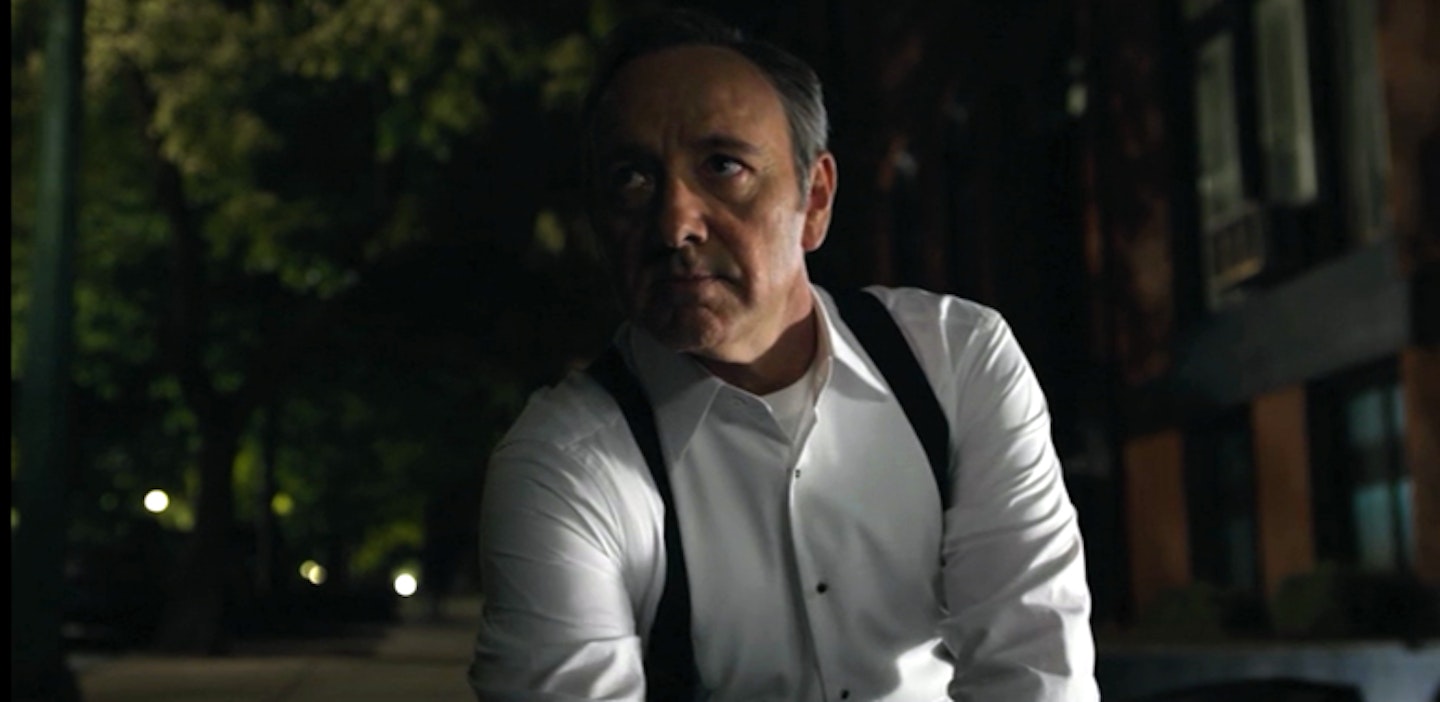
“Killing the dog in the first episode is a point of pride in retrospect, but at the time I really didn’t think much of it. I didn’t know whether that would be a lightning-rod scene or not, I just wanted a cool movie star entry for Kevin Spacey. Coming through double doors and descending some stairs in a tuxedo. I also wanted something dark, something turning to the camera, something unexpected, something that set it apart from the BBC version.
“So when the dog was lying there whimpering – it wasn’t a real dog, obviously – and he does his version of a mercy killing, it just seemed right in line with Frank Underwood. There were elements on the production team who felt this would be a big mistake, that we’d lose half our audience. That’s the big rule, right? Don’t kill the dog? I didn’t know any better, and I didn’t see any problem with it. The dog’s going to die anyway, it’s not a human. You can kill as many humans as you want, that’s no problem, but a dog?
“I talked to Fincher about it, and said, ‘People are saying we’ll lose half our audience if we keep this scene in.’ Fincher thinks for a second and says, ‘I don’t give a shit.’ I said, ‘Me either, let’s keep it in.’ It’s not that we didn’t care. We did think, ‘If this isn’t the scene for you, this isn’t the show for you.’ So at least you know in the first 30 seconds…
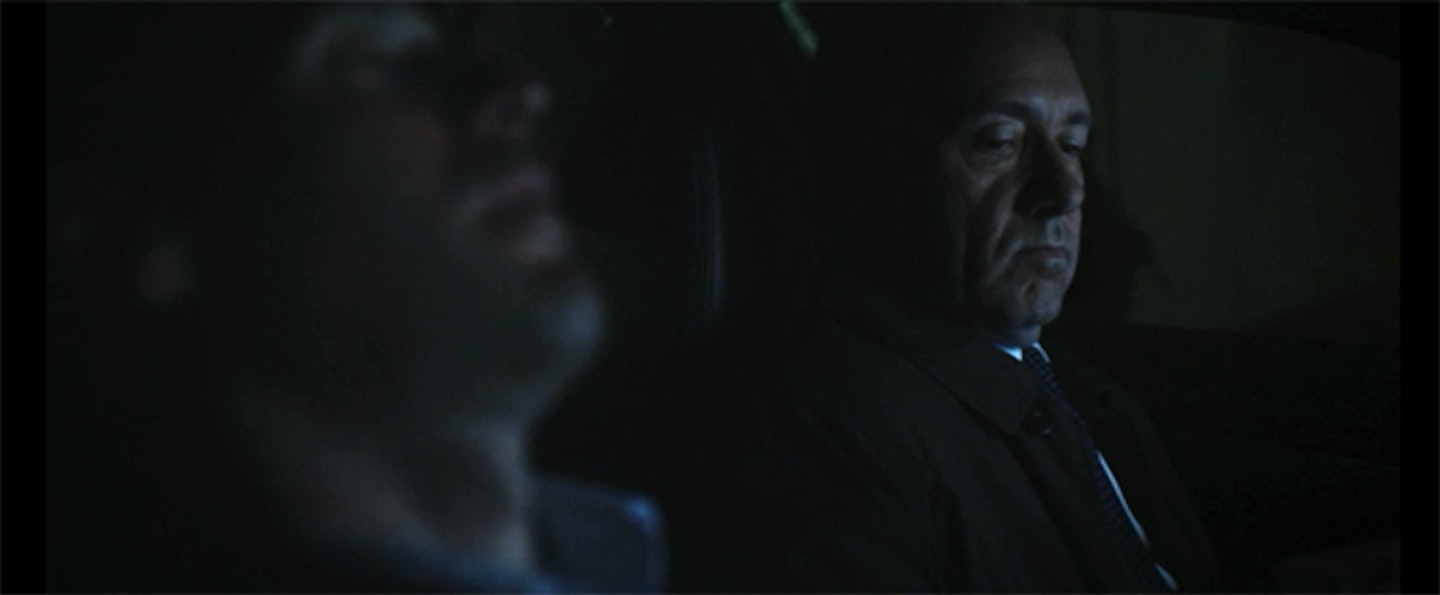
“And the death of Peter Russo, that was another grey area. The justification in Frank’s head is ‘This guy was on a path towards self-destruction anyway.’ It’s sort of like the dog, a mercy killing. He’s better off, we’re better off... You see it pains him. Frank is not a sociopath, he had a fondness for Peter, and he’d have preferred not to have done that, but he felt the need to. The greyness is in stark contrast with the death at the top of season two, where it is premeditated and an emotionless decision.
“I don’t think Frank has ever been a sociopath. I don’t think he’s one now. Not all murderers are sociopaths, very few of them are. A sociopath is incapable of empathy. I think we see empathy in the love for his wife, in his friendships… he can access the part of his brain that lets you connect with others. Sometimes he has to suppress that – all politicians do, to an extent, but I don’t think he’s a sociopath. We don’t approach him that way. We’re looking for the humanity with him. It’s more interesting to see that contradiction between the humanity and ruthlessness in him.
“A lot of people want to make comparisons: Frank is this, Claire is this. I see characters in a constant state of flux. At moments, certainly, Claire is more absorbent and flexible; then at other moments Frank is. He’s the vulnerable one, and she’s the one who’s more cold-blooded, and the balances are more up and down."
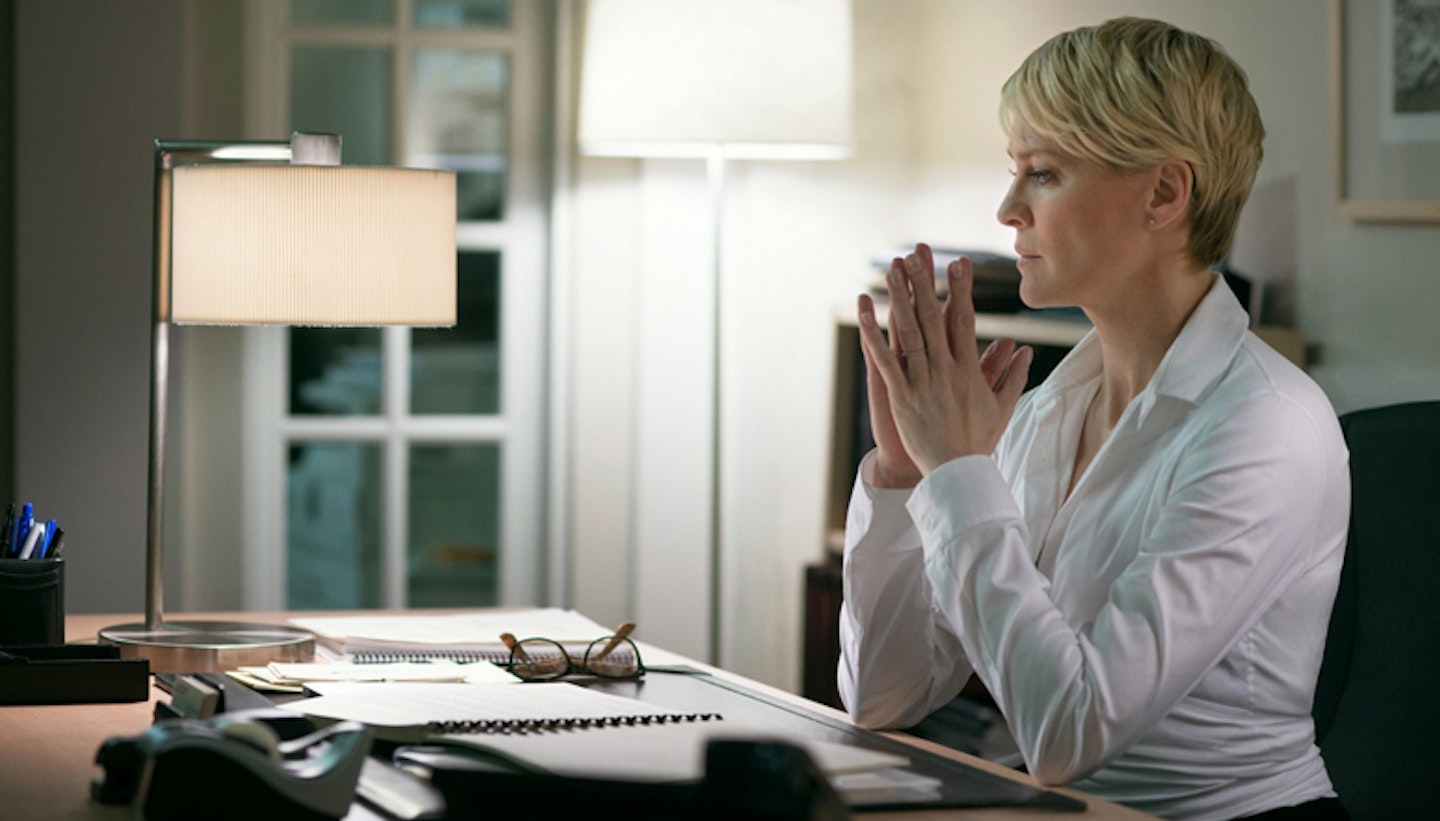
“One of the things we wanted to accomplish at the top of season two, as well as Frank pushing someone under a train, is have Claire do something, to my mind, comparable in its insidiousness. She says to a pregnant woman, 'I am willing to let your child wither and die inside you, if that's what's required.' And you feel in that moment that she really is willing to do that, so she has that in her too. She may not have been on the subway platform, but she has the gene that would allow her to do that.
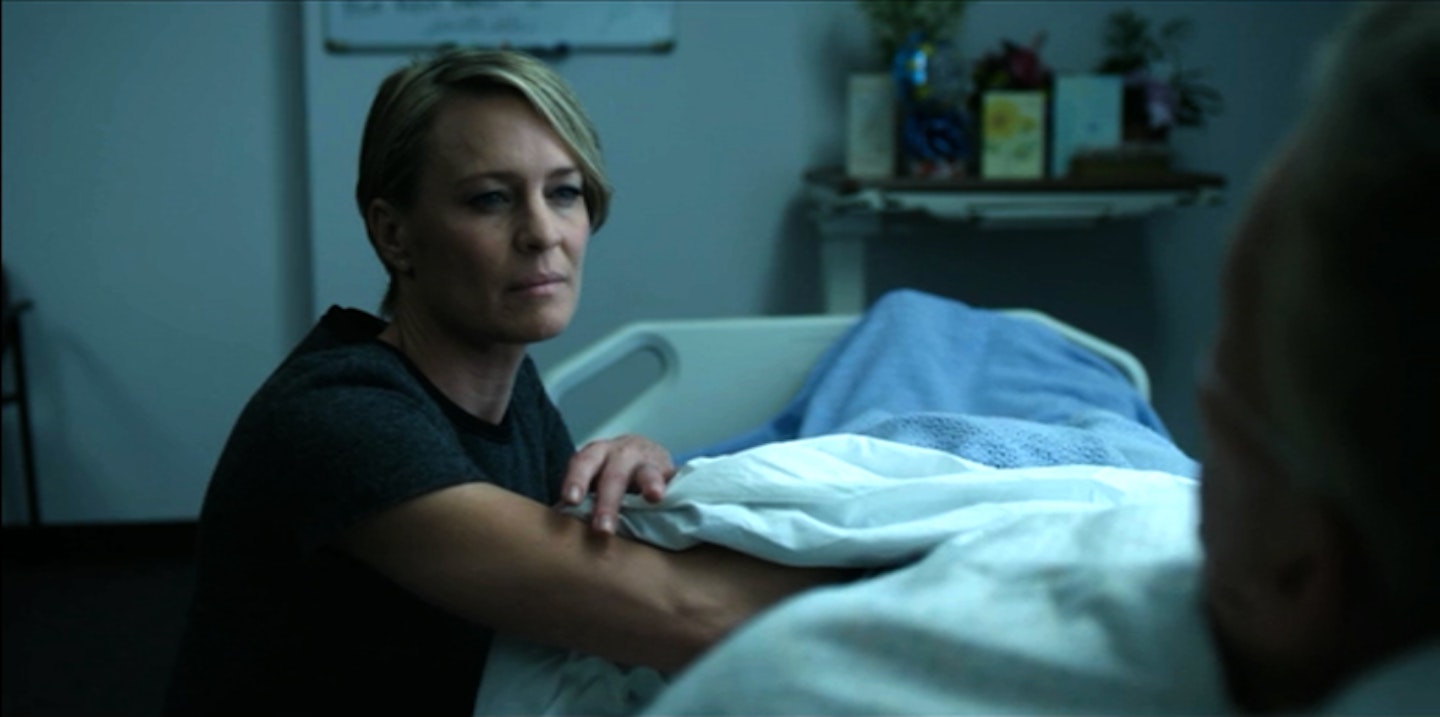
“We call Claire’s undercover shuffle with her old bodyguard Steve ‘The Handjob In The Hospital’. When we refer to that scene in the writers’ room, we’ll say something like, ‘Do you remember when in Handjob In The Hospital…? Stage four pancreatic cancer?’ I think I came up with that idea. These ideas don’t normally come together fully-formed. I can’t remember that exact connect-the-dots to that moment.
“Up until that point, we were quite restrained with Claire: expressionistic moments in the graveyard, firing her staff… But we wanted her to talk explicitly about her truth, about what this marriage meant to her. The bad version of that scene is her sitting down and having wine with one of her friends, talking about when Francis proposed to her, but what we’ll often do is think about what would be most unlikely or the most bizarre situation where the characters might talk about these things.
“Ninety-nine times out of a 100, it’s a bad idea. ‘It would be really weird to have this conversation while skydiving…’ would be an example of a bad idea. But we’ll entertain that for a half second, just to see where it leads us. What does it do to the conversation when you’re falling through the air at terminal velocity? But you look at the characters, you look at the episode, and you wonder, ‘Wouldn’t it be strange to have her talking to her dying secret service agent about this?’ That’s not where you automatically go to.
“You think he’s dying, so you’re putting life and death into that conversation, and a lot of things start to happen. Then you take it one more step, and say, ‘What if this guy confessed his love for her?’ That feels like something that could happen. Then it becomes a real scene. How can we take this one step further? What if she gives him what he wants? Not in a sentimental way, not in a 'I’ll tell a dying man I was always attracted to him…' way. Give him the brutal truth. You’ve asked for it, here’s what you get. Then it really becomes alive. That is what we’re aiming for all the time, and often fall short. But I’m really proud of that scene. If I feel like we’ve seen it before, I’m not that interested."
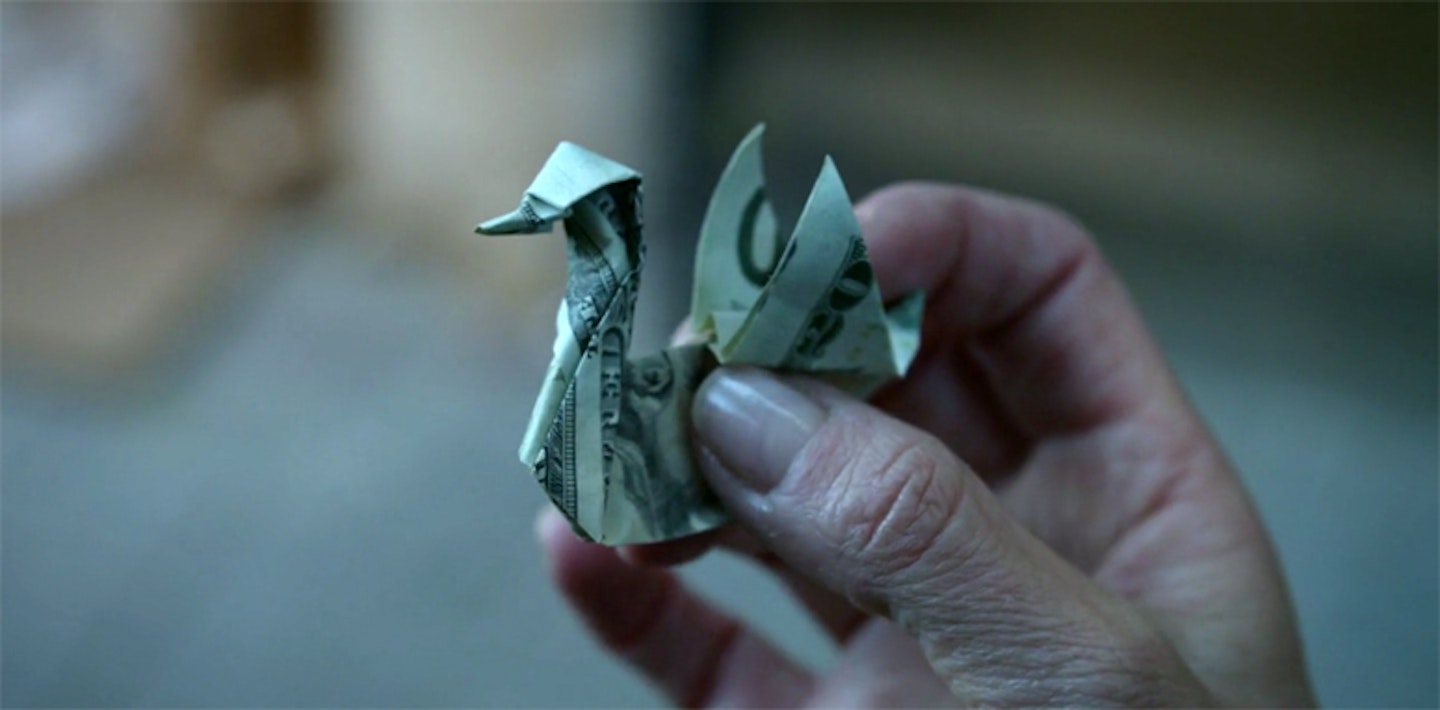
“There are a lot of moments I wish I could go back and tweak for various reasons. Sometimes I think I didn’t write the scene as well as I could have, other times I think it’s a storyline that had missed opportunities, or a storyline I could have tossed out all together. Sometimes it’s a performance-related thing, where I wish I’d given the actor something else, or a note, or asked a director for more coverage... there are a million things like that.
“There is one thing in season one that I am both weirdly proud of and embarrassed by. I vacillate. We joked about it in the writers’ room, we joked about it with David Fincher… this fucking origami bird! What does it mean? Why is it there? Is it unintentionally comic? Does it have any sort of pay off? I can’t answer any of those questions. I’m proud of the fact that it’s just sort of weird. I think it does have a bit of a pay off in the Adam Galloway apartment scene with the giant swan on the ground.
“What we were striving for in scenes like that, or that scene in the graveyard where the woman confronts [Claire] and she sees that kid looking out, is to explore things that had nothing to do with anything. Things that are just random, chaotic, life-in-all-its-forms stuff, things that just happen to you because they happen to you. Perhaps stuff that Claire notices and Frank doesn’t, and we thought that perhaps in a subliminal way that would help establish a difference in their characters, and sometimes it works, and in the case of the origami... I really don’t know. Some people seem to love it, some people ask, ‘What the fuck is this origami doing here?’ I think I’m both of those people at the same time.”